workplace surveillance
description: the use of technology to monitor employees in the workplace, often to improve productivity or security
21 results

The Lonely Century: How Isolation Imperils Our Future
by
Noreena Hertz
Published 13 May 2020
(And Amazon Has a Patent for It.)’, New York Times, 1 February 2018, https://www.nytimes.com/2018/02/01/technology/amazon-wristband-tracking-privacy.html. 22 James Bloodworth, Hired: Six Months Undercover in Low-Wage Britain (Atlantic Books, 2018). 23 Luke Tredinnick and Claire Laybats, ‘Workplace surveillance’, Business Information Review 36, no. 2 (2019), 50–2, https://doi.org/10.1177/0266382119853890. 24 Ivan Manokha, ‘New Means of Workplace Surveillance: From the Gaze of the Supervisor to the Digitalization of Employees’, Monthly Review, 1 February 2019, https://monthlyreview.org/2019/02/01/new-means-of-workplace-surveillance/. 25 Zuboff, The Age of Surveillance Capitalism. 26 Olivia Solon, ‘Big Brother isn’t just watching: workplace surveillance can track your every move’, Guardian, 6 November 2017, https://www.theguardian.com/world/2017/nov/06/workplace-surveillance-big-brother-technology. 27 Ibid. 28 Note that by ‘sales’ I am including trials.
…
See, for instance, Shoshana Zuboff, In the Age of the Smart Machine: The Future of Work and Power (Basic Books, 1988); Barbara Garson, The Electronic Sweatshop: How Computers Are Turning the Office of the Future into the Factory of the Past (Simon & Schuster, 1988); Michael Wallace, ‘Brave New Workplace: Technology and Work in the New Economy’, Work and Occupations 16, no. 4 (1989), 363–92. 41 Ivan Manokha, ‘New Means of Workplace Surveillance: From the Gaze of the Supervisor to the Digitalization of Employees’, Monthly Review, 1 February 2019, https://monthlyreview.org/2019/02/01/new-means-of-workplace-surveillance/. 42 In 1985, 30% of OECD workers were unionized; by 2019 this had fallen to 16%. Niall McCarthy, ‘The State Of Global Trade Union Membership’, Statista, 7 May 2019, https://www.statista.com/chart/9919/the-state-of-the-unions/. 43 Trade union membership has halved since the 1980s, pretty much all over the globe; Niall McCarthy, ‘The State of Global Trade Union Membership’, Forbes, 6 May 2019, https://www.forbes.com/sites/niallmccarthy/2019/05/06/the-state-of-global-trade-union-membership-infographic/); ONS, ‘Trade Union Membership Statistics 2018’, Department for Business, Energy and Industrial Strategy, https://assets.publishing.service.gov.uk/government/uploads/system/uploads/attachment_data/file/805268/trade-union-membership-2018-statistical-bulletin.pdf. 44 Richard Feloni, ‘Employees at the world’s largest hedge fund use iPads to rate each other’s performance in real-time – see how it works’, Business Insider, 6 September 2017, https://www.businessinsider.com/bridgewater-ray-dalio-radical-transparency-app-dots-2017-9?
…
Even before the coronavirus struck, over half of global companies with more than 1,000 employees were using ‘non-traditional techniques to monitor staff, including tracking keystrokes, monitoring email conversations and even monitoring conversations between staff’.23 ‘User-activity monitoring’ – UAM, as this new world of workplace surveillance is known – was on track to be a $3.3 billion industry by 2023.24 Now, with a rapid rise in remote working as a result of the pandemic, as well as increased emphasis on productivity, worker surveillance has significantly ramped up. We are living in an age that Shoshana Zuboff has called the ‘Age of Surveillance Capitalism’.25 An age in which for increasing numbers of people your employer is not only constantly watching you, but constantly using AI, Big Data and a whole host of ever more intrusive and granular measuring devices to draw all kinds of conclusions about you.

Exponential: How Accelerating Technology Is Leaving Us Behind and What to Do About It
by
Azeem Azhar
Published 6 Sep 2021
Lyft’, Bloomberg Second Measure, 2020 <https://secondmeasure.com/datapoints/rideshare-industry-overview/> [accessed 23 September 2020]. 54 ‘Gig Economy Research’, Gov.uk, 7 February 2018 <https://www.gov.uk/government/publications/gig-economy-research> [accessed 21 September 2020]. 55 Ravi Agrawal, ‘The Hidden Benefits of Uber’, Foreign Policy, 16 July 2018 <https://foreignpolicy.com/2018/07/16/why-india-gives-uber-5-stars-gig-economy-jobs/> [accessed 21 September 2020]. 56 Department for Business, Energy & Industrial Strategy, ‘Gig Economy Research’, Gov.uk, 7 February 2018 <https://www.gov.uk/government/publications/gig-economy-research> [accessed 21 September 2020]. 57 Directorate General for Internal Policies, The Social Protection of Workers in the Platform Economy, Study for the EMPL Committee, IP/A/EMPL/2016-11 (European Parliament, 2017). 58 Nicole Karlis, ‘DoorDash Drivers Make an Average of $1.45 an Hour, Analysis Finds’, Salon, 19 January 2020 <https://www.salon.com/2020/01/19/doordash-drivers-make-an-average-of-145-an-hour-analysis-finds/> [accessed 27 March 2021]. 59 Kate Conger, ‘Uber and Lyft Drivers in California Will Remain Contractors’, New York Times, 4 November 2020 <https://www.nytimes.com/2020/11/04/technology/california-uber-lyft-prop-22.html> [accessed 12 January 2021]. 60 Mary-Ann Russon, ‘Uber Drivers Are Workers Not Self-Employed, Supreme Court Rules’, BBC News, 19 February 2021 <https://www.bbc.com/news/business-56123668> [accessed 29 March 2021]. 61 ‘Judgement: Uber BV and Others (Appellants) v Aslam and Others (Respondents)’, 19 February 2021 <https://www.supremecourt.uk/cases/docs/uksc-2019-0029-judgment.pdf> [accessed 19 March 2021]. 62 ‘Frederick Winslow Taylor: Father of Scientific Management Thinker’, The British Library <https://www.bl.uk/people/frederick-winslow-taylor> [accessed 29 March 2021]. 63 Nikil Saval, Cubed: A Secret History of the Workplace (New York: Anchor Books, 2015), p. 42. 64 Saval, Cubed, p. 56. 65 Alex Rosenblat, Tamara Kneese and danah boyd, Workplace Surveillance (Data & Society Research Institute, 4 January 2017) <https://doi.org/10.31219/osf.io/7ryk4>. 66 ‘In March 2017, the Japanese Government Formulated the Work Style Reform Action Plan.’, Social Innovation, September 2017 <https://social-innovation.hitachi/en/case_studies/ai_happiness/> [accessed 6 October 2020]. 67 Alex Hern, ‘Microsoft Productivity Score Feature Criticised as Workplace Surveillance’, The Guardian, 26 November 2020 <http://www.theguardian.com/technology/2020/nov/26/microsoft-productivity-score-feature-criticised-workplace-surveillance> [accessed 1 April 2021]. 68 Stephen Chen, ‘Chinese Surveillance Programme Mines Data from Workers’ Brains’, South China Morning Post, 28 April 2018 <https://www.scmp.com/news/china/society/article/2143899/forget-facebook-leak-china-mining-data-directly-workers-brains> [accessed 6 October 2020]. 69 Robert Booth, ‘Unilever Saves on Recruiters by Using AI to Assess Job Interviews’, The Guardian, 25 October 2019 <http://www.theguardian.com/technology/2019/oct/25/unilever-saves-on-recruiters-by-using-ai-to-assess-job-interviews> [accessed 6 October 2020]. 70 Chartered Institute of Personnel and Development, ‘Workplace Technology: The Employee Experience’ (CIPD: July 2020) <https://www.cipd.co.uk/Images/workplace-technology-1_tcm18-80853.pdf> [accessed 19 May 2021]. 71 Sarah O’Connor, ‘When Your Boss Is an Algorithm’, Financial Times, 7 September 2016 <https://www.ft.com/content/88fdc58e-754f-11e6-b60a-de4532d5ea35> [accessed 3 August 2020]. 72 Tom Barratt et al., ‘Algorithms Workers Can’t See Are Increasingly Pulling the Management Strings’, Management Today, 25 August 2020 <http://www.managementtoday.co.uk/article/1692636?
…
The rule of Taylorism is that the unobserved worker is an inefficient worker.63 And as time went on, Taylorism would only become more intrusive in the lives of workers. In the 1930s, Lillian Gilbreth – a psychologist and engineer – developed personality and psychological testing for personnel management staff (who would now be known as ‘human resources’). This approach would soon become the norm in large organisations.64 As one contemporary account of workplace surveillance put it, ‘Not only would workplaces … be designed so that workers would internalize their boss’ gaze, but the addition of these testing methods signalled that the boss was genuinely trying to get inside employees’ heads.’65 It was that classic twentieth-century deal: you get a high-security, high-wage job, but in return you give up your autonomy.
…
An Exploration of Various Datasets on Intra-State Violence, MPRA Paper 45264 (University Library of Munich, 2012) <https://mpra.ub.uni-muenchen.de/45264/> Rose, Carol, ‘The Comedy of the Commons: Custom, Commerce, and Inherently Public Property’, The Unviersity of Chicago Law Review, 53(3), 1986, pp. 711–781 Rosenblat, Alex, Tamara Kneese and danah boyd, Workplace Surveillance (Data & Society Research Institute, 4 January 2017) <https://doi.org/10.31219/osf.io/7ryk4> Rotman, David, ‘We’re Not Prepared for the End of Moore’s Law’, MIT Technology Review, 24 February 2020 <https://www.technologyreview.com/2020/02/24/905789/were-not-prepared-for-the-end-of-moores-law/> [accessed 11 March 2021] Saval, Nikil, Cubed: A Secret History of the Workplace (New York: Anchor Books, 2015) Sanger, David E., The Perfect Weapon: War, Sabotage, and Fear in the Cyber Age (New York: Crown Publishers, 2018) Schmidt, Eric, and Jared Cohen, The New Digital Age: Reshaping the Future of People, Nations and Business (New York: Alfred A.

Data and Goliath: The Hidden Battles to Collect Your Data and Control Your World
by
Bruce Schneier
Published 2 Mar 2015
Hewlett-Packard analyzed: Joel Schechtman (14 Mar 2013), “Book: HP piloted program to predict which workers would quit,” Wall Street Journal, http://blogs.wsj.com/cio/2013/03/14/book-hp-piloted-program-to-predict-which-workers-would-quit. Workplace surveillance is: This paper gives an excellent overview of workplace surveillance. Alex Roxenblat, Tamara Kneese, and danah boyd (8 Oct 2014), “Workplace surveillance,” Data and Society Research Institute, http://www.datasociety.net/pubs/fow/WorkplaceSurveillance.pdf. our employer is the most dangerous: Ellen Messmer (31 Mar 2010), “Feel like you’re being watched at work? You may be right,” Network World, http://www.networkworld.com/article/2205938/data-center/feel-like-you-rebeing-watched-at-work—you-may-be-right.html.
…
At least one company negotiated a significant reduction in its health insurance costs by distributing Fitbits to its employees, which gave the insurance company an unprecedented view into its subscribers’ health habits. Similarly, several schools are requiring students to wear smart heart rate monitors in gym class; there’s no word about what happens to that data afterwards. In 2011, Hewlett-Packard analyzed employee data to predict who was likely to leave the company, then informed their managers. Workplace surveillance is another area of enormous potential harm. For many of us, our employer is the most dangerous power that has us under surveillance. Employees who are regularly surveilled include call center workers, truck drivers, manufacturing workers, sales teams, retail workers, and others. More of us have our corporate electronic communications constantly monitored.
…
Edgar, attempted intimidation of King by, 98, 102–3 hop searches, 37–38 HTTPS Everywhere, 215, 216 Huawei, 74, 86, 182 Human Rights Watch, 96, 178 IBM, 104, 122 iCloud, 58 ICREACH, 67 identification, anonymity and, 131–33 identity theft, 116–19 iMacs, 58 imperfection, systemic, resilience and, 163–64 IMSI-catchers, 68, 165–66 independence, oversight and, 162–63, 169, 177–78 India, 76 individuals, data rights of, 192–93, 200–203, 211, 232 data storage by, 18–19 see also mass surveillance, individual defenses against inferences, from data mining, 34–35, 258, 259 and correlation of data sets, 40–42 error rates in, 34, 54, 136–37, 269 information fiduciaries, 204–5 information middlemen: Internet’s empowering of, 57–58 monopolistic nature of, 57 Information Technology and Innovation Foundation, 121–22 InfoUSA, 53 Initiate Systems, 41 Instagram, 58 intelligence community, US, 67 budget of, 64–65, 80 fear and, 228 international partnerships of, 76–77 private contractors in, 80, 228 revolving door in, 80 see also specific agencies Internal Revenue Service, US (IRS), 137, 159 International Association of Privacy Professionals, 124 International Principles on the Application of Human Rights to Communications Surveillance, 167, 168–69 International Telecommunications Union, 106, 187 Internet: anonymity on, 43–44, 131–33 benefits of, 8 commons as lacking on, 188–89 cyberattacks on, see cyberwarfare deliberate insecurity of, 7, 146–50, 182 early history of, 119 fee-based vs. ad-based business model of, 50, 56, 206 freedom of, 107, 188 government censorship and control of, 94–95, 106–7, 187–88, 237 identification and, 131–33 information middlemen and, see information middlemen international nature of, 6–7, 187–88, 209, 220–21 laws and, 220–21 as media source, 15 physical wiring of, 64 privacy and, 203–4, 230–31 traditional corporate middlemen eliminated by, 56–57 trust and, 181–82 Internet companies, transparency reports of, 207–8 Internet Movie Database, 43 Internet of Things, 15–17 Internet searches, NSA collection of data on, 22 Internet surveillance, 47–51 advertising and, see advertising, personalized cable companies and, 48–49 cookies and, 47–48, 49 global, 69–71 NSA and, 62, 64–65, 78, 122, 149–50, 188, 207 ubiquity of, 32 see also mass surveillance, corporate iPads, 58 iPhones, 31, 42, 58 Iran: government surveillance in, 71–72 Stuxnet cyberattack on, 75, 132, 146, 150 Iraq War, 65 IRC, 119 Israel: mass surveillance by, 182 Stuxnet cyberattack by, 75, 132, 146, 150 US intelligence data shared with, 77 Israeli assassination team, identification of, 43 ISS (Intelligence Support Systems) World, 81 iTunes store, 57 Jawbone, 16 Jay-Z, 48 Joint Terrorism Task Forces, 69 journalists, government surveillance and, 96 JPMorgan Chase, 116 judiciary, surveillance and, 168, 170, 179–80 justice, as core American value, 230 Justice Department, US, 184, 186 Kerry, John, 101 keyboard loggers, 25 key escrow, 120–21 keyword searches, 28, 261 Kindle, 28, 59 King, Martin Luther, Jr., 237 Hoover’s attempted intimidation of, 98, 102–3 Kinsey, Alfred, database of, 44 Klein, Mark, 250, 288 Kunstler, James, 206 Kurds, 76 Lanier, Jaron, 201 Lavabit, 83–84, 209 law enforcement, state and local: abuse of power by, 135, 160 IMSI-catchers used by, 68 location data and, 2, 243 militarization of, 184 predictive algorithms used by, 98–99, 100, 137, 159 racism in, 184 secrecy of, 100, 160 transparency and, 170 lawyers, government surveillance and, 96 legal system: as based on human judgment, 98–99 government surveillance and, 168, 169 secrecy and, 100 Lenddo, 111, 113 Level 3 Communications, 85 Levison, Ladar, 84 liberty: commons and, 189 as core American value, 230 social norms and, 227 liberty, government surveillance and, 6, 91–107, 184 abuses of power in, 101–5, 160, 234–35 anonymity and, 133 censorship and, 94–95, 106–7, 187–88 and changing definition of “wrong,” 92–93, 97–98 discrimination and, 103–4 fear and, 4, 7, 95–97, 135, 156–57, 171, 182–83, 222, 226, 227–30 Internet freedom and, 106–7, 188 political discourse and, 97–99 secrecy and, 99–101 security and, 135, 157–59, 361–62 ubiquitous surveillance and, 92, 97 Library of Congress, 199 Libya, 81 license plate scanners, 26–27, 40 storage of data from, 36 lifelogging, 16 Lincoln, Abraham, 229 Little Brother (Doctorow), 217 location data, 1–3, 28, 39, 62, 243, 339 advertising and, 39–40 de-anonymizing with, 44 embedded in digital photos, 14–15, 42–43 selling of, 2 Locke, John, 210 Los Angeles Police Department, 160 LOVEINT, 102, 177 Lower Merion School District, 104 LulzSec hacker movement, 42 MAC addresses, 29 MacKinnon, Rachel, 210, 212 Madrid Privacy Declaration (2009), 211–12 Magna Carta, information age version of, 210–12 manipulation, surveillance-based, 113–16 Manning, Chelsea, 101 marijuana use, 97 MARINA, 36 Mask, The, 72 Massachusetts Group Insurance Commission, 263 mass surveillance: algorithmic-based, 129–31, 159, 196 as automated process, 5, 129–31 dangers of, 4–5, 6 economic harms from, 6–7, 121–22, 151 false positives in, 137, 138, 140, 323–24 fatalism and, 224–25 lack of consent in, 5, 20, 51 metadata in, 20–23 minimum necessary, 158–59, 176, 211 moratorium urged on new technologies of, 211 noticing, 223 security harmed by, 7, 146–50 social norms and, 226–38 society’s bargains with, 4, 8–9, 47, 49–51, 58–59, 60–61, 158, 226, 235–38 speaking out about, 223–24 targeted surveillance vs., 5, 26, 139–40, 174, 179–80, 184, 186 transparency and, 159–61, 169, 170–71, 176 ubiquity of, 5, 26–28, 32, 40, 53, 92, 97, 224, 233 urgency of fight against, 233–35 see also data collection; data mining mass surveillance, corporate, 46–61, 86–87 advertising and, see advertising, personalized business competitiveness and, 119–24 cost of, to US businesses, 123–24 customers as products in, 53, 58 customer service and, 47 data brokers and, see data brokers discrimination and, 109–13 error rates in, 54 feudal nature of, 58–59, 61, 210–12 free services and convenience exchanged for, 4, 49–51, 58–59, 60–61, 226, 235–36 growth of, 23–24 harms from, 108–18 lobbying and, 233 manipulation and, 113–16 manipulation through, 6 market research and, 47 privacy breaches and, 116–18, 142, 192, 193–95 secrecy and, 194 see also mass surveillance, public-private partnership in mass surveillance, corporate, solutions for, 7, 190–212 accountability and liability in, 192, 193–95, 196–97, 202 data quality assurance and, 181, 192, 194, 202 government regulation in, 192, 196–99, 210 individual participation and, 192 and limits on data collection, 191, 192, 199–200, 202, 206 and limits on data use, 191, 192, 194, 195–97, 206 lobbying and, 209, 222–23 and resistance to government surveillance, 207–10 and respect for data context, 202 rights of individuals and, 192, 200–203, 211 salience and, 203–4 security safeguards and, 192, 193–95, 202, 211 specification of purpose and, 192 transparency and, 192, 194, 196, 202, 204, 207–8 mass surveillance, government, 5–6, 62–77 chilling effects of, 95–97 in China, 70, 86, 140, 209 cloud computing and, 122 corporate nondisclosure agreements and, 100 corporate resistance to, 207–10 cost of, 91 cost of, to US businesses, 121–23 democracy and, 6, 95, 97–99 discrimination and, 4, 6, 93 encryption technology and, 119–23 fear-based justification for, 4, 7, 95–97, 135, 156–57, 171, 182–83, 222, 226, 227–30, 246 fishing expeditions in, 92, 93 in France, 79 fusion centers in, 69, 104 gag orders in, 100, 122 geopolitical conflicts and, 219–20 global, 69–71 growth of, 24–25 hacking in, 71–74 as harmful to US global interests, 151 as ineffective counterterrorism tool, 137–40, 228 international partnerships in, 76–77, 169 lack of trust in US companies resulting from, 122–23, 181–83 liberty and, see liberty, government surveillance and location data used in intimidation and control by, 2 mission creep and, 104–5 oversight and accountability in, 161–63, 169 in Russia, 70, 187, 188, 237 mass surveillance, government ( continued) secrecy of, 99–101, 121, 122 subversion of commercial systems in, 82–87 in UK, 69, 79 US hypocrisy about, 106 see also mass surveillance, public-private partnership in; specific agencies mass surveillance, government, solutions for, 7, 168–89 adequacy and, 168 and breakup of NSA, 186–87 due process and, 168, 184 illegitimate access and, 169, 177 integrity of systems and, 169, 181–82 international cooperation and, 169, 180, 184 judicial authority and, 168, 179–80 legality and, 168, 169 legitimacy and, 168 limitation of military role in, 185–86 lobbying and, 222 “Necessary and Proportionate” principles of, 167, 168–69 necessity and, 168 oversight and, 169, 172–78 proportionality and, 168 separation of espionage from surveillance in, 183–84 targeted surveillance and, 179–80, 184, 186 transparency and, 169, 170–71, 176 trust and, 181–83 user notification and, 168 whistleblowers and, 169, 178–79 mass surveillance, individual defenses against, 7, 213–25 avoidance in, 214 blocking technologies in, 214–17 breaking surveillance technologies, 218–19 distortion in, 217–18 fatalism as enemy of, 224–25 political action and, 213, 222–24, 237–38 mass surveillance, public-private partnership in, 6, 25, 78–87, 207 government subversion of commercial systems in, 82–87 nondisclosure agreements and, 100 privately-made technology in, 81–82, 100 sale of government data in, 79–80 and value neutrality of technology, 82 material witness laws, 92 McCarthyism, 92–93, 229, 234 McConnell, Mike, 80 McNealy, Scott, 4 media: fear and, 229 pre-Internet, 15 medical devices, Internet-enabled, 16 medical research, collection of data and, 8 Medtronic, 200 memory, fallibility of, 128, 320 Merkel, Angela, 151, 160–61, 183, 184 metadata, 216 from cell phones, see cell phone metadata data vs., 17, 23, 35, 251 from Internet searches, 22–23 in mass surveillance, 20–23, 67 from tweets, 23 Michigan, 2, 39 Microsoft, 49, 59–60, 84, 148, 221, 272, 359 customer loyalty to, 58 government demands for data from, 208, 359 increased encryption by, 208 transparency reports of, 207 Mijangos, Luis, 117 military, US: ban on domestic security role of, 185–86 Chinese cyberattacks against, 73 “Don’t Ask Don’t Tell” policy of, 197 drone strikes by, 94 see also Army, US; Cyber Command, US; Defense Department, US MINARET, 175 Minority Report (film), 98 mission creep, 104–5, 163 Mitnick, Kevin, 116 Moglen, Eben, 95, 318 money transfer laws, 35–36 Monsegur, Hector, 42 Mori, Masahiro, 55 MS Office, 60 Multiprogram Research Facility, 144 Muslim Americans, government surveillance of, 103–4 MYSTIC, 36 Napolitano, Janet, 163 Narent, 182 narrative fallacy, 136 Nash equilibrium, 237 Natanz nuclear facility, Iran, 75 National Academies, 344 National Counterterrorism Center, 68 National Health Service, UK, 79 National Institute of Standards and Technology (NIST), proposed takeover of cryptography and computer security programs by, 186–87 National Reconnaissance Office (NRO), 67 National Security Agency, US (NSA): backdoors inserted into software and hardware by, 147–48 Bermuda phone conversations recorded by, 23 “Black Budget” of, 65 cell phone metadata collected by, 20–21, 36, 37, 62, 138, 339 “collect” as defined by, 129, 320 “collect it all” mentality of, 64–65, 138 COMSEC (communications security) mission of, 164–65, 346 congressional oversight of, 172–76 “connect-the-dots” metaphor of, 136, 139 cost to US businesses of surveillance by, 121–22, 151 counterterrorism mission of, 63, 65–66, 184, 222 counterterrorism successes claimed by, 325 cryptanalysis by, 144 cyberattacks by, 149–50 drug smugglers surveilled by, 105 economic espionage by, 73 encryption programs and, 85–86, 120–21 encryption standards deliberately undermined by, 148–49 expanding role of, 24, 165 FISA Amendments Act and, 174–75, 273 foreign eavesdropping (SIGINT) by, 62–63, 76, 77, 122–23, 164–65, 186, 220 Germany surveilled by, 76, 77, 122–23, 151, 160–61, 183, 184 Gmail user data collected by, 62 historical data stored by, 36 history of, 62–63 inadequate internal auditing of, 303 innocent people surveilled by, 66–67 insecure Internet deliberately fostered by, 146–50, 182 international partnerships of, 76–77 Internet surveillance by, 22, 62, 64–65, 78, 86–87, 122–23, 149–50, 188, 207 keyword searches by, 38, 261 legal authority for, 65–66 location data used by, 3, 339 Multiprogram Research Facility of, 144 Muslim Americans surveilled by, 103 parallel construction and, 105, 305 Presidential Policy Directives of, 99–100 PRISM program of, 78, 84–85, 121, 208 proposed breakup of, 186–87 QUANTUM program of, 149–50, 329–30 relationship mapping by, 37–38 remote activation of cell phones by, 30 secrecy of, 99–100, 121, 122 SIGINT Enabling Project of, 147–49 Snowden leaks and, see Snowden, Edward SOMALGET program of, 65 Syria’s Internet infrastructure penetrated by, 74, 150 Tailored Access Operations (TAO) group of, 72, 85, 144, 149, 187 UN communications surveilled by, 102, 183 National Security Agency, US (NSA) ( continued) Unitarian Church lawsuit against, 91 US citizens surveilled by, 64, 66, 175 US global standing undermined by, 151 Utah Data Center of, 18, 36 vulnerabilities stockpiled by, 146–47 National Security Letters (NSLs), 67, 84, 100, 207–8 Naval Criminal Investigative Service, 69 Naval Research Laboratory, US, 158 Nest, 15–16 Netcom, 116 Netflix, 43 Netsweeper, 82 New Digital Age, The (Schmidt and Cohen), 4 newsgroups, 119 New York City Police Department, 103–4 New York State, license plate scanning data stored by, 36 New York Times, Chinese cyberattack on, 73, 132, 142 New Zealand, in international intelligence partnerships, 76 Nigeria, 81 9/11 Commission Report, 139, 176 Nineteen Eighty-Four (Orwell), 59, 225 NinthDecimal, 39–40 NIST, see National Institute of Standards and Technology Nixon, Richard, 230 NOBUS (nobody but us) vulnerabilities, 147, 181 Nokia, 81 nondisclosure agreements, 100 North, Oliver, 127–28 Norway, 2011 massacre in, 229–30 NSA, see National Security Agency, US Oak Ridge, Tenn., 144 Obama, Barack, 33, 175 NSA review group appointed by, 176–77, 181 Obama administration: Internet freedom and, 107 NSA and, 122 whistleblowers prosecuted by, 100–101, 179 obfuscation, 217–18 Occupy movement, 104 Ochoa, Higinio (w0rmer), 42–43 OECD Privacy Framework, 191–92, 197 Office of Foreign Assets Control, 36 Office of Personnel Management, US, 73 Off the Record, 83, 215 Olympics (2014), 70, 77 Onionshare, 216 openness, see transparency opt-in vs. opt-out consent, 198 Orange, 79 Orbitz, 111 Organized Crime Drug Enforcement Task Forces, 69 Orwell, George, 59, 225 oversight, of corporate surveillance, see mass surveillance, corporate, solutions for, government regulation in oversight, of government surveillance, 161–63, 169, 172–78 Oyster cards, 40, 262 packet injection, 149–50 PageRank algorithm, 196 Palmer Raids, 234 Panetta, Leon, 133 panopticon, 32, 97, 227 panoptic sort, 111 parallel construction, 105, 305 Pariser, Eli, 114–15 Parker, Theodore, 365 PATRIOT Act, see USA PATRIOT Act pen registers, 27 Peoria, Ill., 101 personalized advertising, see advertising, personalized personally identifying information (PII), 45 Petraeus, David, 42 Petrobras, 73 Pew Research Center, 96 PGP encryption, 215, 216 photographs, digital, data embedded in, 14–15, 42–43 Pirate Party, Iceland, 333 Placecast, 39 police, see law enforcement, state and local police states, as risk-averse, 229 political action, 7, 213, 222–24, 237–38 political campaigns: data mining and, 33, 54 personalized marketing in, 54, 115–16, 233 political discourse, government surveillance and, 97–99 politics, politicians: and fear of blame, 222, 228 technology undermined by, 213 Posse Comitatus Act (1878), 186 Postal Service, US, Isolation Control and Tracking program of, 29 Presidential Policy Directives, 99–100 prices, discrimination in, 109–10 PRISM, 78, 84–85, 121, 208 privacy, 125–33 algorithmic surveillance and, 129–31, 204 as basic human need, 7, 126–27 breaches of, 116–18, 192, 193–95 as fundamental right, 67, 92, 126, 201, 232, 238, 318, 333, 363–64 of healthcare data, 193 Internet and, 203–4, 230–31 loss of, 4, 7, 50–51, 96, 126 and loss of ephemerality, 127–29 “nothing to hide” fallacy and, 125 and proposed Consumer Privacy Bill of Rights, 201, 202 security and, 155–57 social norms and, 227, 230–33 third-party doctrine and, 67–68, 180 as trumped by fear, 228 undervaluing of, 7–8, 50, 156, 194, 203–4 Privacy and Civil Liberties Oversight Board, 176, 177 privacy enhancing technologies (PETs), 215–16, 217 Privacy Impact Notices, 198, 211 probable cause, 184 Protect America Act (2007), 275 public-private partnership, see mass surveillance, public-private partnership in Qualcomm, 122 QUANTUM packet injection program, 149–50, 329–30 radar, high-frequency, 30 “ratters,” 117 Reagan, Ronald, 230 redlining, 109 Red October, 72 Regulation of Investigatory Powers Act (UK; 2000), 175 relationships, mapping of, 37–38 remote access Trojans (RATs), 117 resilience, systemic imperfections and, 163–64 retailers, data collected by, 14, 24, 51–52 revenge porn, 231 RFID chips, 29, 211 Richelieu, Cardinal, 92 rights, of consumers, see consumer rights risk, police states as averse to, 229 risk management, 141–42 Robbins, Blake, 104 robotics, 54–55 Rogers, Michael, 75 Roosevelt, Franklin D., 229, 230 Rousseff, Dilma, 151 RSA Security, 73, 84 rule of law, 210, 212 Russia: cyberwarfare and, 180 mandatory registration of bloggers in, 95 mass surveillance by, 70, 187, 188, 237 salience, 203–4 San Diego Police Department, 160 Sarkozy, Nicolas, 96 Saudi Arabia, 76, 187, 209 Saudi Aramco, 75 Schmidt, Eric, 4, 22, 57, 86, 125 schools, surveillance abuse in, 104 Schrems, Max, 19, 200 search engines, business model of, 113–14, 206 secrecy: corporate surveillance and, 194 of government surveillance, 99–101, 121, 122, 170–71 legitimate, transparency vs., 332–33 security, 135–51 airplane, 93, 158 attack vs. defense in, 140–43 balance between civil liberties and, 135 complexity as enemy of, 141 cost of, 142 data mining as unsuitable tool for, 136–40 and deliberate insecurity of Internet, 146–50 encryption and, see encryption fear and, 4, 7, 95–97, 135, 156–57, 171, 182–83, 222, 226, 227–30 hindsight and, 136 mass surveillance as harmful to, 7, 146–50 and misguided focus on spectacular events, 135 narrative fallacy in, 136 privacy and, 155–57 random vs. targeted attacks and, 142–43 risk management and, 141–42 social norms and, 227 surveillance and, 157–59 vulnerabilities and, 145–46 security cameras, see surveillance technology self-censorship, 95 Senate, US, Intelligence Committee of, 102, 172, 339 Sensenbrenner, Jim, 174 Sense Networks, 2, 40 September 11, 2001, terrorist attacks, 63, 65, 136, 156, 169, 184, 207, 227, 229 SHAMROCK, 175 Shirky, Clay, 228, 231 Shutterfly, 269 Siemens, 81 SIGINT (signals intelligence), see National Security Agency, US, foreign eavesdropping by SIGINT Enabling Project, 147–49 Silk Road, 105 Skype, 84, 148 SmartFilter, 82 smartphones: app-based surveillance on, 48 cameras on, 41 as computers, 14 GPS tracking in, 3, 14, 216–17 MAC addresses and Bluetooth IDs in, 29 Smith, Michael Lee, 67–68 Snowden, Edward, 177, 178, 217 e-mail of, 94 Espionage Act and, 101 EU Parliament testimony of, 76 NSA and GCHQ documents released by, 6, 20, 40–41, 62, 65, 66, 67, 72, 74, 78, 96, 99–100, 121, 129, 144, 149, 150, 160–61, 172, 175, 182, 207, 223, 234, 238 Sochi Olympics, 70, 77 Socialists, Socialism, 92–93 social networking: apps for, 51 customer scores and, 111 customer tracking and, 123 data collected in, 200–201 government surveillance of, 295–96 see also specific companies social norms: fear and, 227–30 liberty and, 227 mass surveillance and, 226–38 privacy and, 227, 230–33 security and, 227 software: security of, 141, 146 subscription vs. purchase models for, 60 Solove, Daniel, 93 SOMALGET, 65 Sophos, 82 Sotomayor, Sonia, 95, 342 South Korea, cyberattack on, 75 spy gadgets, 25–26 SSL encryption, 85–86 SSL (TLS) protocol, 215 Standard Chartered Bank, 35–36 Staples, 110 Stasi, 23 Steinhafel, Gregg, 142 strategic oversight, 162, 172–77 StingRay surveillance system, 100, 165 Stross, Charles, 128 Stuxnet, 75, 132, 146 collateral damage from, 150 Supreme Court, US, 26, 180, 361–62 third-party doctrine and, 68 surveillance: automatic, 31–32 benefits of, 8, 190 as business model, 50, 56, 113–14, 206 cell phones as devices for, 1–3, 14, 28, 39, 46–47, 62, 100, 216–17, 219, 339 constant, negative health effects of, 127 cost of, 23–26 espionage vs., 170, 183–84 government abuses of, 101–5 government-on-government, 63, 73, 74, 75, 76, 158 hidden, 28–30 legitimate needs for, 219–20 as loaded term, 4 mass, see mass surveillance oversight and accountability in, 161–63, 169, 172–78 overt, 28, 30 perception of, 7–8 personal computers as devices for, 3–4, 5 politics and, 213 pre-Internet, 64, 71 principles of, 155–66 targeted, see targeted surveillance transparency and, 159–61, 169, 170–71, 176 surveillance technology: cameras, 14, 17, 31–32 cost of, 25–26 shrinking size of, 29 Suspicious Activity Reports (SAR), 138 Sweeney, Latanya, 44, 263–64 SWIFT banking system, 73 Swire, Peter, 160 Syria, 81 NSA penetration of Internet infrastructure in, 74, 150 System for Operative Investigative Measures (SORM; Russia), 70 tactical oversight, 162, 177–79 Tailored Access Operations group (TAO), 72, 85, 144, 149, 187 Taleb, Nassim, 136 Target, 33, 34, 55 security breach of, 142, 193 targeted advertising, see advertising, personalized targeted surveillance: mass surveillance vs., 5, 26, 139–40, 174, 179–80, 184, 186 PATRIOT Act and, 174 tax fraud, data mining and, 137 technology: benefits of, 8, 190–91 political undermining of, 213 privacy enhancing (PETs), 215–16, 217 see also surveillance technology telephone companies: FBI demands for databases of, 27, 67 historical data stored by, 37, 67 NSA surveillance and, 122 transparency reports of, 207–8 see also cell phone metadata; specific companies Teletrack, 53 TEMPORA, 79 Terrorism Identities Datamart Environment, 68, 136 terrorists, terrorism: civil liberties vs., 135 government databases of, 68–69 as justification for mass surveillance, 4, 7, 170–71, 226, 246 mass surveillance as ineffective tool for detection of, 137–40, 228 and NSA’s expanded mission, 63, 65–66 terrorists, terrorism ( continued) overly broad definition of, 92 relative risk of, 332 Uighur, 219, 287 uniqueness of, 138 see also counterterrorism; security; September 11, 2001, terrorist attacks thermostats, smart, 15 third-party doctrine, 67–68, 180 TLS (SSL) protocol, 215 TOM-Skype, 70 Tor browser, 158, 216, 217 Torch Concepts, 79 trade secrets, algorithms as, 196 transparency: algorithmic surveillance and, 196 corporate surveillance and, 192, 194, 196, 202, 207–8 legitimate secrecy vs., 332–33 surveillance and, 159–61, 169, 170–71, 176 Transparent Society, The (Brin), 231 Transportation Security Administration, US (TSA), screening by, 136, 137, 159, 231, 321 Treasury, US, 36 Truman, Harry, 62, 230 trust, government surveillance and, 181–83 truth in lending laws, 196 Tsarnaev, Tamerlan, 69, 77, 139 Turkey, 76 Turla, 72 Twitter, 42, 58, 199, 208–9 metadata collected by, 23 Uber, 57 Uighur terrorists, 219, 287 Ukraine, 2, 39 Ulbricht, Ross (Dread Pirate Roberts), 105 “uncanny valley” phenomenon, 54–55 Underwear Bomber, 136, 139 UN High Commissioner on Human Rights, 96 Unit 8200, 77 United Kingdom: anti-discrimination laws in, 93 data retention law in, 222 GCHQ of, see Government Communications Headquarters in international intelligence partnerships, 76 Internet censorship in, 95 license plate scanners in, 27 mission creep in, 105 Regulation of Investigatory Powers Act (2000) of, 175 United Nations: digital privacy resolution of, 232, 363–64 NSA surveillance of, 102, 183 United States: data protection laws as absent from, 200 economic espionage by, 73 Germany’s relations with, 151, 234 intelligence budget of, 64–65, 80 NSA surveillance as undermining global stature of, 151 Stuxnet cyberattack by, 75, 132, 146, 150 Universal Declaration of Human Rights, 232 USA PATRIOT Act (2001), 105, 221, 227 Section 215 of, 65, 173–74, 208 Section 505 of, 67 US Cellular, 177 Usenet, 189 VASTech, 81 Verint, 2–3, 182 Verizon, 49, 67, 122 transparency reports of, 207–8 Veterans for Peace, 104 Vigilant Solutions, 26, 40 Vodafone, 79 voiceprints, 30 vulnerabilities, 145–46 fixing of, 180–81 NSA stockpiling of, 146–47 w0rmer (Higinio Ochoa), 42–43 Wall Street Journal, 110 Wanamaker, John, 53 “warrant canaries,” 208, 354 warrant process, 92, 165, 169, 177, 180, 183, 184, 342 Constitution and, 92, 179, 184 FBI and, 26, 67–68 NSA evasion of, 175, 177, 179 third-party doctrine and, 67–68, 180 Watson, Sara M., 55 Watts, Peter, 126–27 Waze, 27–28, 199 weapons of mass destruction, overly broad definition of, 92, 295 weblining, 109 WebMD, 29 whistleblowers: as essential to democracy, 178 legal protections for, 162, 169, 178–79, 342 prosecution of, 100–101, 178, 179, 222 Wickr, 124 Wi-Fi networks, location data and, 3 Wi-Fi passwords, 31 Wilson, Woodrow, 229 Windows 8, 59–60 Wired, 119 workplace surveillance, 112 World War I, 229 World War II, 229 World Wide Web, 119, 210 writers, government surveillance and, 96 “wrong,” changing definition of, 92–93 Wyden, Ron, 172, 339 XKEYSCORE, 36 Yahoo, 84, 207 Chinese surveillance and, 209 government demands for data from, 208 increased encryption by, 208 NSA hacking of, 85 Yosemite (OS), 59–60 YouTube, 50 Zappa, Frank, 98 zero-day vulnerabilities, 145–46 NSA stockpiling of, 146–47, 180–81 ZTE, 81 Zuckerberg, Mark, 107, 125, 126 Praise for DATA AND GOLIATH “Data and Goliath is sorely needed.

The Costs of Connection: How Data Is Colonizing Human Life and Appropriating It for Capitalism
by
Nick Couldry
and
Ulises A. Mejias
Published 19 Aug 2019
Alongside the consumer surveillance, discussed more fully in chapter 3, and the mutual surveillance between competitors that is inherent to market economies, capitalist labor relations have—according to Fuchs—always been characterized by at least three types of surveillance: applicant surveillance, workplace surveillance, and workforce surveillance.97 For applicant surveillance, there is an increasing reliance on automated testing rather than on human assessment. By 2014, an estimated 60 to 70 percent of US prospective employees faced online personality tests before they could even be seen or spoken to by a human being.98 Personality testing dates back at least to the 1930s, but greater data processing power has massively increased the capacity to integrate such testing and the results it produces into the categorization of actual and potential workers.
…
“Statistics—Work Related Stress, Depression or Anxiety,” Health and Safety Executive, 2017, http://www.hse.gov.uk/statistics/causdis/stress/. 108. Cf. Hamblen, “Wearables for Workplace.” For a broader discussion, see Lupton, “Domains of Quantified Selves” on “forced self-tracking”; and Rosenblat, Kneese, and Boyd, “Workplace Surveillance.” 109. Kaplan, “The Spy,” 136. 110. Braverman, Labor. 111. Samaddar, Marx and the Postcolonial Age, 4–5. 112. Galloway, The Four. 113. Brynjolfsson and McAfee, Machine Age. 114. Frey and Osborne, “Future of Employment.” 115. Vanderzeil, Currier, and Shavel et al., “Retail Automation.” 116.
…
The Politics of Life Itself. Princeton, NJ: Princeton University Press, 2009. . Powers of Freedom. Cambridge, UK: Cambridge University Press, 1999. . “Screen and Intervene: Governing Risky Brains.” History of the Human Sciences 23, no. 1 (2010): 79–105. Rosenblat, Alex, Tamara Kneese, and danah boyd. “Workplace Surveillance.” Social Science Research Network, December 14, 2014. https://papers.ssrn.com/abstract=2536605. Rosenblat, Alex, and Luke Stark. “Algorithmic Labor and Information Asymmetries: A Case Study of Uber’s Drivers.” International Journal of Communication 10 (2016): 3748–84. Rosenthal, Caitlin.
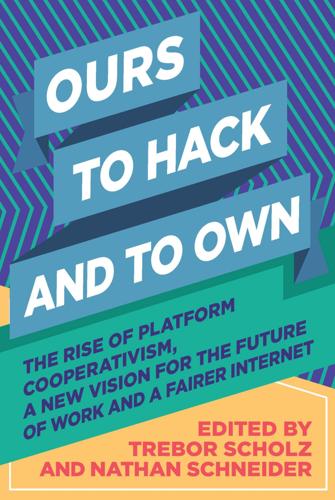
Ours to Hack and to Own: The Rise of Platform Cooperativism, a New Vision for the Future of Work and a Fairer Internet
by
Trebor Scholz
and
Nathan Schneider
Published 14 Aug 2017
They need to understand the parameters and patterns that govern their working environment. A protective legal framework is not only essential to guarantee the right to organize and the freedom of expression but it can help to guard against platform-based child labor, wage theft, arbitrary behavior, litigation, and excessive workplace surveillance along the lines of the “reputation systems” of companies like Lyft and Uber that “deactivate” drivers if their ratings fall below 4.5 stars. Crowd workers should have a right to know what they are working on instead of contributing to mysterious projects posted by anonymous consignors. At its heart, platform cooperativism is not about any particular technology but the politics of lived acts of cooperation.
…
Discuss with your co-op different design solutions that allow constituents to control which information is disclosed to whom while remaining compliant with transparency requirements. If your platform is also used to facilitate work, then the platform potentially needs to comply with laws about workplace surveillance. Privacy settings and the ability to log off without continued tracking, as well as mechanisms to examine and dispute the data the platform tracks, may be vital to providing workers a fair workplace. Privacy-as-practice approaches involve design principles aimed at respectful and accountable interactions among all co-op constituents.

Lab Rats: How Silicon Valley Made Work Miserable for the Rest of Us
by
Dan Lyons
Published 22 Oct 2018
Bentham called this the panopticon, from Greek roots meaning, roughly, “to see all.” The idea didn’t really fly as a way to build prisons, but it is often used as a metaphor about power and control in modern society, most notably by French philosopher Michel Foucault. Researchers who study workplace surveillance often cite Foucault’s work when they discuss the “panoptic effect” that surveillance exerts on employees. Today electronic surveillance at work has become nearly ubiquitous and is enabled by an array of powerful tools. “Electronic performance monitoring” systems track punctuality, break time, idle time—pretty much everything you do at work.
…
Accessed May 31, 2018. https://www.amanet.org/training/articles/the-latest-on-workplace-monitoring-and-surveillance.aspx. Associated Press in London. “Millions of Voiceprints Quietly Being Harvested as Latest Identification Tool.” Guardian, October 13, 2014. https://www.theguardian.com/technology/2014/oct/13/millions-of-voiceprints-quietly-being-harvested-as-latest-identification-tool. Ball, Kirstie. “Workplace Surveillance: An Overview.” Labor History 51, no. 1 (2010): 87–106. https://doi.org/10.1080/00236561003654776. Beyer, Elizabeth. “Why One-Third of American Working-Age Men Could Be Displaced by Robots.” MarketWatch, May 14, 2018. https://www.marketwatch.com/story/why-one-third-of-american-working-age-men-could-be-displaced-by-robots-2018-05-14.
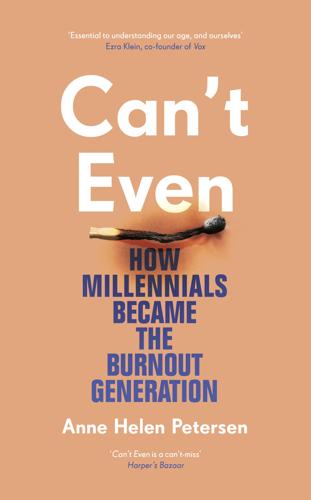
Can't Even: How Millennials Became the Burnout Generation
by
Anne Helen Petersen
Published 14 Jan 2021
—CATE, FREELANCE FILM CRITIC, LOS ANGELES YOU CAN TALK ABOUT THE FISSURED WORKPLACE IN AN abstract way, moving workers from one company to a subcompany like figurines in a tabletop game. But fissuring affects workers on a practical level, with effects that can be loosely divided into the rise and glorification of overwork, the spread and normalization of workplace surveillance, and the fetishization of freelance flexibility. Each of these trends contributes to burnout in its own noxious way. But the end result is the same: They make the everyday experience of work, across the income spectrum, undeniably and unceasingly shitty. The Rise of Overwork The American overwork ethic has become so standardized that there’s no feeling of before or after: It’s just how it is, how it always will be.
…
But in the moment, those promises made it difficult to protest anything, and made me eager to please and accept his surveillance.” This sort of monitoring is often soft-sold in the name of efficiency or happens so incrementally that employees have few avenues for resistance. “Your employer controls your livelihood,” Ben Waber, an MIT scientist who’s studied workplace surveillance, explains. “And if they say ‘give me this data,’ it’s very hard to say no.”12 When there are so few options for stable employment, you don’t get to decide whether or not you want to be surveilled. You just figure out how to manage the suffering it creates. There’s significant evidence that the more surveilled—and less trusted—you feel, the less productive you are.
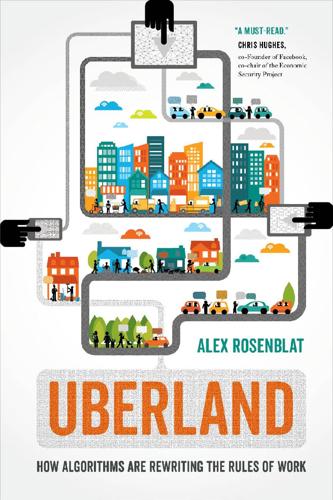
Uberland: How Algorithms Are Rewriting the Rules of Work
by
Alex Rosenblat
Published 22 Oct 2018
Uber does track driver behavior, such as through the rating system and, more recently, through telematics (how drivers brake, accelerate, and speed).3 It’s not a stretch for drivers to presume that the boss is listening and watching too. By trying to track driver movements in granular detail, from the shakiness of their phones to their passenger-sourced ratings for each trip, Uber employs a type of workplace surveillance that contradicts its claims that it has a “hands off” management style. For example, the app displays a safe-driving report with two categories, Smooth Breaks and Smooth Accelerations. One driver had smooth breaks 219/264 times, and the app displayed the message “Several harsh breaks detected.”
…
Lawrence Mishel, “Uber and the Labor Market: Uber Drivers’ Compensation, Wages, and the Scale of Uber and the Gig Economy,” Economic Policy Institute, May 15, 2018, www.epi.org/publication/uber-and-the-labor-market-uber-drivers-compensation-wages-and-the-scale-of-uber-and-the-gig-economy/ 32. Kate Conger, “In Letter, Uber Said Drivers Didn’t Make Advertised Earnings due to Their ‘Choices.’” Gizmodo, December 21, 2017, https://gizmodo.com/in-letter-uber-said-drivers-didnt-make-advertised-earn-1820928444. 33. For further research into workplace surveillance and how this dynamic intersects with the work of being an independent driver in the trucking industry, see Karen Levy, “The Automation of Compliance: Techno-Legal Regulation in the United States Trucking Industry” (unpublished manuscript, 2014). 34. David C. Shonka and Katherine Worthman, “Complaint for Permanent Injunction and Other Equitable Relief,” Federal Trade Commission v.

You've Been Played: How Corporations, Governments, and Schools Use Games to Control Us All
by
Adrian Hon
Published 14 Sep 2022
Jared Spataro, “Power Your Digital Transformation with Insights from Microsoft Productivity Score,” Microsoft 365, October 29, 2020, www.microsoft.com/en-us/microsoft-365/blog/2020/10/29/power-your-digital-transformation-with-insights-from-microsoft-productivity-score; Alyse Stanley, “Microsoft’s Creepy New ‘Productivity Score’ Gamifies Workplace Surveillance,” Gizmodo, November 26, 2020, https://gizmodo.com/microsofts-creepy-new-productivity-score-gamifies-workp-1845763063. 51. “Did He Really Say That?” Ask MetaFilter, February 18, 2009, https://ask.metafilter.com/114578/Did-he-really-say-that#1645. 52. Isobel Asher Hamilton, “Microsoft’s New ‘Productivity Score’ Lets Your Boss Track How Much You Use Email, Teams, and Even Whether You Turn Your Camera on During Meetings,” Business Insider, November 26, 2020, www.businessinsider.com/microsofts-productivity-score-tool-invades-employee-privacy-2020-11. 53.
…
Isobel Asher Hamilton, “Microsoft’s New ‘Productivity Score’ Lets Your Boss Track How Much You Use Email, Teams, and Even Whether You Turn Your Camera on During Meetings,” Business Insider, November 26, 2020, www.businessinsider.com/microsofts-productivity-score-tool-invades-employee-privacy-2020-11. 53. Wolfie Christl (@WolfieChristl), “Esoteric metrics based on analyzing extensive data about employee activities has been mostly the domain of fringe software vendors. Now it’s built into MS 365. A new feature to calculate ‘productivity scores’ turns Microsoft 365 into an full-fledged workplace surveillance tool,” Twitter, November 24, 2020, https://twitter.com/WolfieChristl/status/1331221942850949121?s=20; Todd Bishop, “Microsoft Will Remove User Names from ‘Productivity Score’ Feature After Privacy Backlash,” GeekWire, December 1, 2020, www.geekwire.com/2020/microsoft-will-remove-user-names-productivity-score-feature-privacy-backlash. 54.

Leadership by Algorithm: Who Leads and Who Follows in the AI Era?
by
David de Cremer
Published 25 May 2020
-C. (1997). ‘Artificial intelligence and human decision making.’ European Journal of Operational Research, 99(1), 3-25. 101 Russel, S.J., & Norvig, P. (2016). ‘Artificial intelligence: A modern approach.’ Pearson Education Limited. 102 Rosenblat, A., Kneese, T., & Boyd, D. (2014). ‘Workplace surveillance.’ Data & Society Working Paper. New York: Data & Society Research Institute. 103 Volini, E., Schwartz, J., Roy, I., Hauptmann, M., Van Durme, Y., Denny, B., & Bersin, J. (2019). ‘Organizational performance: It’s a team sport.’ Deloitte report, 2019 Global Human Capital Trends. April 11.
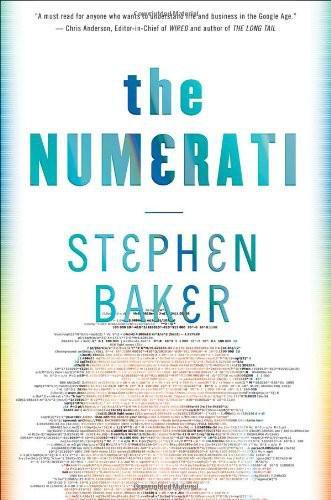
The Numerati
by
Stephen Baker
Published 11 Aug 2008
Then they would redeploy their offerings to draw customers off the beaten paths. But that approach is a tad slow for the Numerati. Ghani and his team have another idea. As we walk around the Accenture office, cameras hanging from the ceiling are tracking our every move. There are about 40 of them, Ghani says matter-of-factly. From my perspective, it's insidious workplace surveillance. With this kind of spy network installed in my skyscraper offices in New York, I think I'd find myself rationing my trips to the bathroom. But Ghani and his colleagues view the cameras as just one more experiment, this one to track workers and customers. The Accenture workers are offering themselves as specimens, and they don't seem to mind a bit.
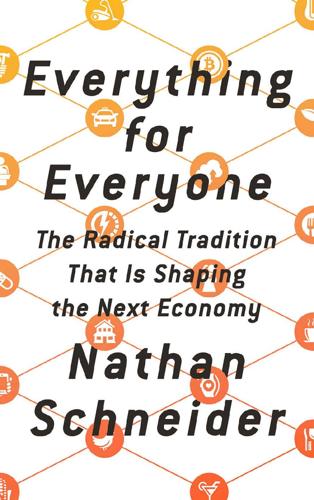
Everything for Everyone: The Radical Tradition That Is Shaping the Next Economy
by
Nathan Schneider
Published 10 Sep 2018
On technological unemployment, see a summary in James Surowiecki, “Robopocalypse Not,” Wired (September 2017); on employment and inequality, see (among many other studies) Michael Förster and Horacio Levy, United States: Tackling High Inequalities, Creating Opportunities for All (OECD, 2014); on workplace surveillance, see Esther Kaplan, “The Spy Who Fired Me,” Harper’s (March 2015); on human computerization, see Brett M. Frischmann, “Human-Focused Turing Tests: A Framework for Judging Nudging and Techno-Social Engineering of Human Beings,” Cardozo Legal Studies Research Paper no. 441 (2014). 22. Community Purchasing Alliance, 2016 Annual Report (February 2017).
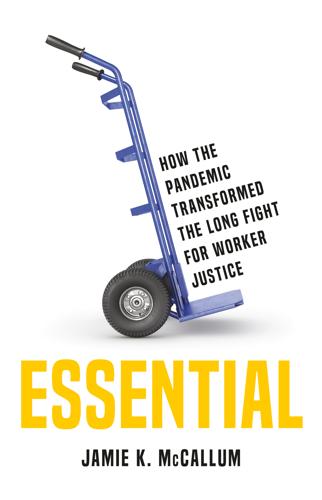
Essential: How the Pandemic Transformed the Long Fight for Worker Justice
by
Jamie K. McCallum
Published 15 Nov 2022
About half (49 percent) of new teleworkers reported greater flexibility in how they put in their hours, while just over one-third said telework made juggling work with family responsibilities easier. They didn’t even miss their coworkers: 65 percent said virtual communication tools were “a good substitute” for in-person interaction with colleagues. Zoom fatigue, perhaps, was overblown.26 There was indeed an expanded workplace surveillance state, but most people never knew their bosses were watching.27 More than half of those with jobs that can be done remotely say they’d like to continue working this way.28 (The situation was less sanguine for those who had young children home from school during the pandemic. Most working parents claimed getting work done was hard, compared with workers without children.)29 Occupation dictated the ability to work from home: only about 4 percent of frontline workers have the option to telecommute, and the vast majority of those are highly paid medical professionals.

Arriving Today: From Factory to Front Door -- Why Everything Has Changed About How and What We Buy
by
Christopher Mims
Published 13 Sep 2021
You’ll also find a (hopefully) accessible explanation of the “thinking” process of the AI (artificial intelligence) that drives an autonomous vehicle. You’ll learn why automated warehouses are like microchips that process stuff instead of bits, and how the two were designed with the same principles in mind. You will be introduced to “Bezosism,” that braiding together of management practices, AI, workplace surveillance, robots, and hard automation that is the engine of Amazon’s success, and possibly the future of all low-skilled labor. You will come to understand how its antecedent, “Taylorism,” disappeared from our history books because it became the water in which we swim—the dominant ideology of the modern world and the root of all attempts at increasing productivity, both at work and at home.

New Laws of Robotics: Defending Human Expertise in the Age of AI
by
Frank Pasquale
Published 14 May 2020
For an example, see Jessica Leber, “This New Kind of Credit Score Is All Based on How You Use Your Cell Phone,” Fast Company, April 27, 2016, https://www.fastcompany.com/3058725/this-new-kind-of-credit-score-is-all-based-on-how-you-use-your-cellphone, which discusses the assurances of Equifax that their privacy and data security practices were appropriate. 62. ACLU of California, “Metadata: Piecing Together a Privacy Solution,” February 2014, https://www.aclunc.org/sites/default/files/Metadata%20report%20FINAL%202%2021%2014%20cover%20%2B%20inside%20for%20web%20%283%29.pdf. 63. Ajunwa, Crawford, and Schultz, “Limitless Workplace Surveillance.” 64. Shoshana Zuboff, The Age of Surveillance Capitalism: The Fight for a Human Future at the New Frontier of Power (New York: PublicAffairs, 2019). 65. Davis Polk, “Time to Get Serious about Microchipping Employees and Biometric Privacy Laws,” Law Fuel, February 14, 2019, http://www.lawfuel.com/blog/time-to-get-serious-about-microchipping-employees-and-biometric-privacy-laws/. 66.
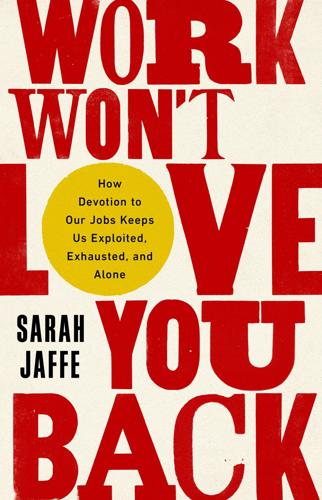
Work Won't Love You Back: How Devotion to Our Jobs Keeps Us Exploited, Exhausted, and Alone
by
Sarah Jaffe
Published 26 Jan 2021
After all, the original Luddites didn’t break machines because they opposed technology, but because the technology was designed to deskill them and make them obsolete. The fun-loving tech workplace, already beginning to be stocked with foosball tables and other games to play, made the programmers feel secure that they were powerful and could never be replaced. Yet companies were already increasing their workplace surveillance, and in many cases already trying to figure out ways to break up tasks and cut into the creative freedom of the programmers. 22 These workspaces, researcher Julian Siravo pointed out, take their cues from the spaces that techies themselves created. “Hackerspaces” took inspiration from the 1960s and 1970s protest movements’ tendency to take over public or private buildings for their own use; the emerging computer culture adapted this practice from student radicals and autonomia and began to create its own spaces in the 1970s and 1980s.

The Job: The Future of Work in the Modern Era
by
Ellen Ruppel Shell
Published 22 Oct 2018
Nearly every study of the practice suggests that surveillance vastly increases workplace stress, promotes worker alienation, lowers job satisfaction, and conveys the perception that the quantity of work one generates is more important than its quality. And there are other, equally damaging drawbacks. In a recent analysis aptly entitled “Watching Me Watching You,” British anthropologists Michael Fischer and Sally Applin conclude that as commonly construed, workplace surveillance creates “a culture where…people more often alter their behavior to suit machines and work with them, rather than the other way around, and…this has eroded conceptions of agency.” That is, the constant surveillance of employees diminishes their capacity to operate as independent thinkers and actors.
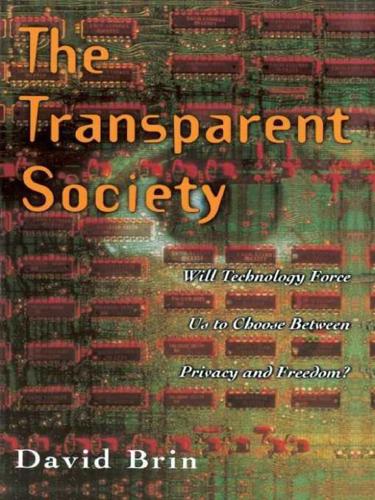
The Transparent Society: Will Technology Force Us to Choose Between Privacy and Freedom?
by
David Brin
Published 1 Jan 1998
Shakespeare Shareware Shimomura, Tsutomu Shockwave Rider Signatures Simulated experience Singapore freedom vs. order in video surveillance in Singleton, Solveig Smart highways SMART satellite tracking Smith, Janna Malamud Smith, Robert Ellis Social Security number characteristics of as name threat to privacy of use as password usefulness of Society error correction in tenets of Software, piracy of Solitude, defined Soros, George Soviet Union, repression in Spammers Speaking tours Spinoza, Baruch Stack, Jack Stalin, Josef Stalking e-mail Star Trek II: Wrath of Khan Star Trek III: The Search for Spock Steganography Stephenson, Neal Sterling, Bruce Steve Jackson Games Stevens, John Paul Stock, Gregory Stock market, accountability of Stock market expert swindle Stoll, Clifford Subjective, triumph of the Subornation Supermarket discount cards Surveillance acceptance of audio of authority current uses of defense against elites engendered by ethical issues regarding future uses of mutually assured obsession with overload of radio tracking video views on workplace Surveillance dust Sweden, privacy issues in Swift, Jonathan Swire, Peter P. Switzerland, banking in T-cells, metaphor of Tag commentary Technology future of transformative power of unequal access to weaknesses of Telephone carriers, accountability off Telephone Consumer Protection Act Telephony, analog vs. digital Television, power of Teller, Edward Templeton, Brad Tenner, Edward Terror Thought experiment Three Stooges Thucydides Tibet, government in exile of Time-delayed transparency Toffler, Alvin Totalitarianism, seeds of destruction of Toxic Release Inventory Law Tracking, electronic Tradeoffs.

Blood in the Machine: The Origins of the Rebellion Against Big Tech
by
Brian Merchant
Published 25 Sep 2023
When technology has eliminated or degraded a worker’s job, status, or identity; when it is hard or impossible to organize to negotiate outcomes; and when support is inaccessible—well, we might expect just about anyone to feel cornered, angry, and more apt to turn to desperate measures. Obvious? Perhaps! But you wouldn’t know it from how US policymakers have approached gig work, automation, and workplace surveillance in the twenty-first century. As in the Luddites’ day, policymakers happen to be actively benefiting from the largesse of today’s technological elite—the deep-pocketed Silicon Valley campaign donors and “job creators.” Too many leaders have turned a blind eye to the outcome; they, too, it seems, would sooner send in the National Guard than intervene in a meaningful way to stanch the bleeding.

Character Limit: How Elon Musk Destroyed Twitter
by
Kate Conger
and
Ryan Mac
Published 17 Sep 2024
They added one another on LinkedIn, created external Slack groups, and traded phone numbers to create support networks in case they all lost access to their email accounts. They also began circulating “A Layoff Guide,” which outlined workers’ rights in the U.S. and gave tips on how to deal with requests from new management and workplace surveillance. Some even tweeted at Musk, asking him to lay them off in order to spare colleagues on work visas. The human resources employees responsible for pulling off the massive cuts felt just as confused. It seemed to them that Sacks, Calacanis, Davis, and the other Musk lieutenants weighing in on the layoffs were trying to outdo each other, each hoping to emerge as the most ruthless.

Architects of Intelligence
by
Martin Ford
Published 16 Nov 2018
It’s easy to think of things that people might find disturbing about this kind of technology. For example, during a negotiation, if your system was secretly watching someone and giving the other side information about their responses, that would create an unfair advantage. Or it could be used for some form of wider workplace surveillance. Monitoring someone when they’re driving to make sure they’re attentive would probably be okay with most people, but they might feel very different about the idea of your system watching an office worker sitting in front of a computer. How do you address those concerns? RANA EL KALIOUBY: There’s a little history lesson here about when Rosalind, myself, and our first employee met around Rosalind’s kitchen table and we were thinking: Affectiva is going to get tested, so what are our boundaries and what’s non-negotiable?